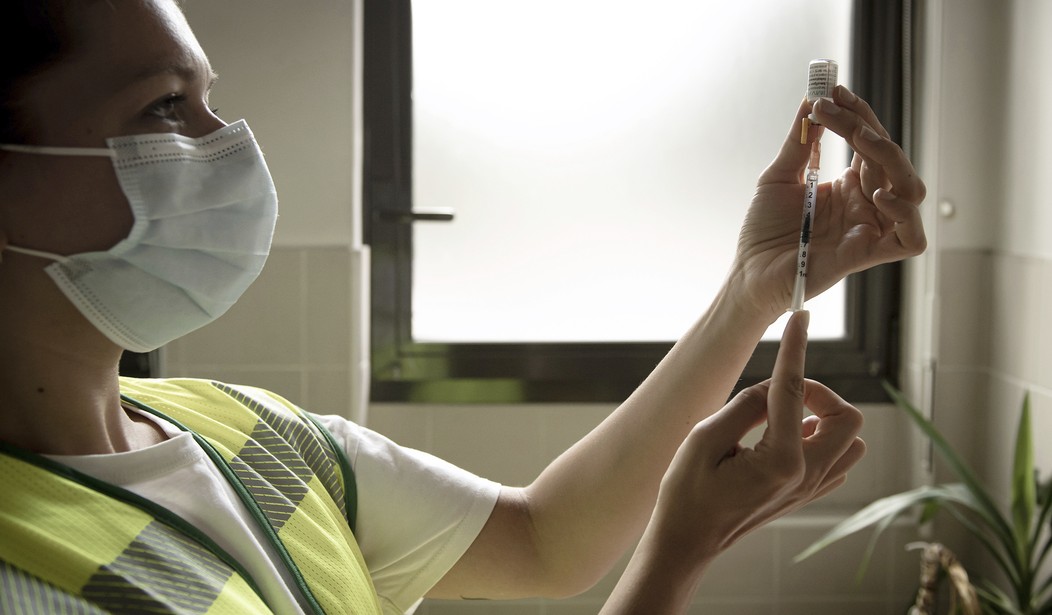Back at the end of January 2020, I wrote “The Great Pestilence Panic of 2020,” PJ Media’s first article on the newly identified Wuhan Coronavirus (2019-nCoV), or what we now know as SARS-CoV-19, COVID-1, or just Covid.
Much has happened since then, with massive (and ineffective) lockdowns, mask mandates, and excessive estimates of impending mortality — I’m sure you all remember. Now we have a new pestilence panic over an outbreak of monkeypox. So what are the facts about monkeypox?
This is monkeypox
View this post on Instagram
This guy, Silver Steele, has recorded the whole course of his own monkeypox case, which lasted pretty much the average time.
Looks pretty unpleasant, doesn’t it? My understanding is that it is very unpleasant. If you take nothing else away from this article, take this advice: don’t rub anything against someone with lesions like this until they feel better.
So what is monkeypox?
Monkeypox is a virus (family Poxviridae) in the genus orthopoxvirus. Now, fair warning: I’m going to abuse the terminology to the extent of calling the genus a “family” because it’s a common-language way to refer to a collection of close relatives, even if Linnaeus wouldn’t approve.
Monkeypox is a zoonotic virus — humans get it from an animal reservoir. You might have guessed that from the name, but surprisingly monkeys are probably not its primary animal host; that’s probably small mammals like African dormice.
Monkeypox is related to a number of other viruses: cowpox, horsepox, vaccinia, and variola. Vaccinia is the virus from which the smallpox vaccine is made. Variola is smallpox.
This family of viruses has an interesting — and very convenient — property: if you’re immune to any of these viruses, you’re going to be more or less immune to all of them.
We need to be careful about terminology here: immune means “has an immune response.” It doesn’t imply 100 percent no infections ever; it’s just whether there’s any immune response at all. If you try to insist that’s not what it means, I shall tell you that your father was a hamster and your mother smelt of elderberries.
That peculiar property of the orthopoxvirus family is, in fact, the basis on which the whole idea of vaccination got started. Edward Jenner observed that milkmaids who had gotten cowpox, a much less dangerous disease than smallpox, didn’t get smallpox, even in a major epidemic. So Jenner gave his gardener’s 9-year-old son cowpox by inoculating him with the goo from a cowpox lesion under his skin. When he recovered from cowpox, Jenner then inoculated the 9-year-old with the goo from smallpox. The child didn’t die; he never got smallpox at all.
How he talked the gardener into this is unknown, but I’m sure the bioethics board wouldn’t approve.
The good news here is that the smallpox vaccine is effective against monkeypox too. Those of us old enough to have been vaccinated for smallpox may have some lingering immunity even now, although it’s unclear how much.
Old folks for the win.
What is having Monkeypox like?
It seems to start like most viruses, with headaches, mild fever, tiredness, and muscle aches. This is followed quickly by lymphadenopathy (swollen glands).
This is the average case: not everyone will have all these symptoms. If you think you might have monkeypox, see a doc.
Then bumps start to appear, as shown in the picture above. These bumps itch and hurt; over the next couple of weeks, they develop into blisters containing clear fluid, then the lesions open up and dry out; in a few days, they scab over, new skin develops, and the virus has run its course.
How is monkeypox transmitted?
Monkeypox virus primarily sheds from the lesions, although it’s also in the saliva of the patient. It’s primarily spread by skin-to-skin contact, but it can also spread through aerosols scattering saliva droplets when the victim coughs or sneezes or by the goo being deposited on some inanimate object. It’s not, technically, an airborne infection; unlike influenza and measles, the virus particles don’t stay floating in the air for hours or days.
And your vocabulary word of the day: fomites, pronounced ‘foh-meet-ez’. This is the technical term for any inanimate object that can carry infection.
What monkeypox is not is a sexually transmitted disease. Yes, it can be transmitted during sex, but transmission just requires contact. It’s just that even bad sex usually involves a lot of contact. A real STD is transmitted by, well, sex: vaginal, oral, or anal.
Who is at risk?
Right now, in the United States, the original cases were all associated with a gay rave orgy in Spain.
It must’ve been a helluva party.
There was probably someone at the party who had picked up the infection from somewhere in Africa where it’s endemic, and it’s not much of an orgy if there isn’t lots and lots of skin-to-skin contact.
The result is that 99 percent of the cases here are men who have sex with men — gay, bi, trans, or just really, really friendly. (I have to admit that the terminology here seems to be a little silly in the woke direction, but I’m sticking to the way the medical literature has it.) In any case, a small percentage are not men who had sex with another man or men. There are very few pediatric cases, and one case of a dog who slept with its owners and whose owners had monkeypox.
A lot of people seem to be jumping to the conclusion that it’s people who have had sex with the kids or sex with the dog, but you can’t conclude that. If you think about it, small children want to be picked up, they need their diapers changed, and so forth, and every dog insists on licking its owners’ hands, and they often like to cuddle. Plenty of contact there.
If we’re going to talk about who’s at risk, though, it’s really important that we remember the distinction between “transmitted by sex” and “transmitted by contact” because not all contact is sexual. The biggest population with monkeypox right now is gay men (and all the other men who have sex with men, you know, whatever.) But if we classify this as a “gay disease,” we risk people deciding, “hey, I don’t have sex with men; I’m safe.”
You’re not. Be careful of any contact with people who have skin lesions like the ones in the picture.
Is monkeypox an epidemic?
Answering this question requires us to understand what an epidemic really is, and once again, the last two and a half years of COVID and the way it’s been covered have made “epidemic” another one of those words that everyone knows but almost no one remembers what it means.
An epidemic is a disease that is growing exponentially in a particular population. In other words, if n people have the disease on day 1, then more than n have the disease on day 2.
This concept is formalized as R, the basic reproduction number. I’ve written about this extensively before, so I won’t repeat it, but the basic magic is if R > 1, it’s going to grow exponentially. If R < 1, it will die out on its own. With monkeypox in a normal population, R is about 0.51, In a gay rave orgy, it’s going to be lots higher, of course, but that’s also a pretty limited population. Another complicating factor is that about 41 percent of this gay rave orgy population is HIV positive, which suggests a weakened immune system in itself. These people may have been both more exposed and more susceptible. This, along with the low value of R, are the first bit of good news: it’s not an epidemic and unlikely to become one.
There’s a second bit of good news here: the virus only lasts for a few weeks, usually 2-4. HIV was particularly insidious because it stayed infectious and unsymptomatic for months or years. Someone who got the virus could spread it for a long time and to many other people before anyone noticed. With monkeypox, you may feel like you’re coming down with the flu for a few days, then you get the bumps, and a few weeks later, you’re over it and very probably immune to monkeypox, cowpox, horsepox, vaccinia, and smallpox.
So what do we do now?
As I said at the start, avoid rubbing anything against anyone who has bumps like that until they feel better. Wash bedclothes and such in hot water and bleach, and if you do have to contact someone, wash your hands with soap and water.
If you get it, it wouldn’t hurt to wear a mask, any sort of mask, while you’re still sick. It probably won’t help either, but what the hell? Other than that, it’s a lot like chickenpox, and the same thing mom did for chickenpox will make you more comfortable: oatmeal baths, camomile lotion, and petroleum jelly. The doctor can prescribe stronger stuff. Cover the lesions with gauze, and if you get it on your hands, wear disposable surgical gloves. And stay the hell home, for crying out loud.
Don’t Panic
Really this article should have that at the top in large friendly letters. Outside of very, um, special circumstances, monkeypox is not easily transmitted, not usually very serious, and not going to hang around. If you’re inclined to those special circumstances, be careful; for the 99 percent plus who aren’t, still be careful, but don’t knock yourselves out.










